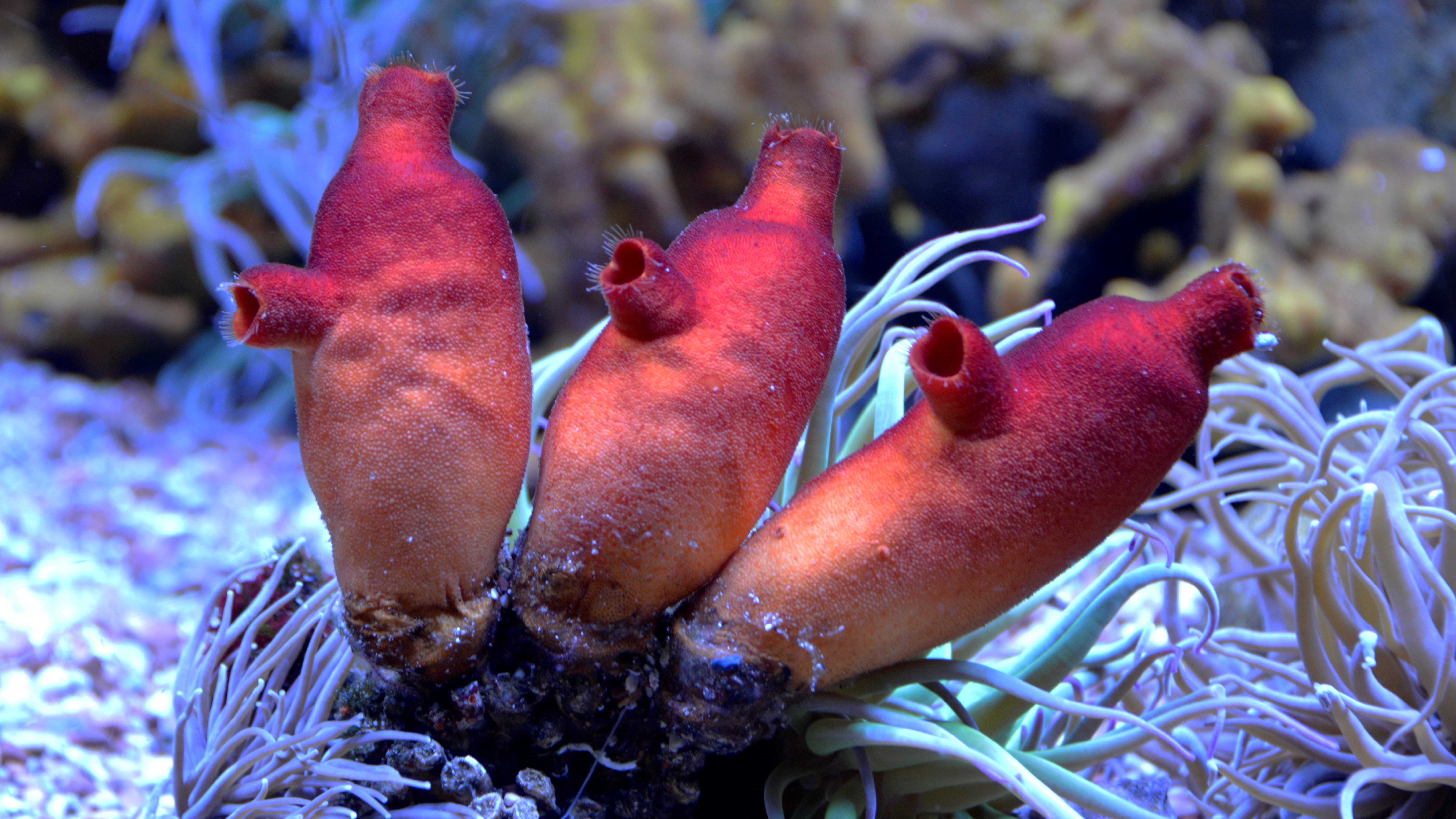Half-billion-year-old fossil of strange Cambrian creature gives evolutionary clues about vertebrates
The fossil of an ancient sea squirt found in a collection at the Utah Museum of Natural History turned out to be the oldest of its kind.

A stunningly-preserved, half-billion year old fossil of a strange Cambrian creature could shift our understanding of how a sister group to vertebrates evolved, a new study suggests.
The fossil, described July 6 in the journal Nature Communications, is the oldest of its kind and belongs to an ancient species of tunicate, Megasiphon thylakos. The discovery answers a fundamental question about what the earliest tunicates looked like, filling an important gap in the animal tree of life.
The newly discovered fossil offers the "best possible window into what early tunicates looked like, what they lived like, what their ecology was, their lifestyle, and that in turn lets us make some inferences about what early tunicates and early vertebrates may have shared in common," study co-author Karma Nanglu, a postdoctoral fellow at the Museum of Comparative Zoology at Harvard University, told Live Science.
Tunicates are the sister group of vertebrates, meaning that they shared a common ancestor hundreds of millions of years ago. They are a diverse subphylum of invertebrate marine animals that encompass 3,000 modern species. They fall into two distinct groups: ascidiacea and appendicularians. Often called "sea squirts," ascidiacea start life in a tadpole-like form, permanently attaching themselves to the sea floor before they metamorphose into barrel-like adults. Appendicularians retain their tadpole morphology into adulthood and continue to swim in the water column. Until now, it was unclear whether the first tunicates more closely resembled ascidiacea or appendicularians — a question that is also important for understanding the evolutionary origins of vertebrates, due to their close relationship with tunicates.
Related: Did the Cambrian explosion really happen?
We know very little about ancient tunicates because we have just one fossil from the early period of their history: a strange creature that doesn't look much like modern tunicates called Shankouclava, which was discovered two decades ago in China. Fossils could be scarce because tunicates were relatively rare, or it could simply be that their soft bodies don't preserve well, Nanglu said.
Evolutionary clues
Study co-authors Javier Ortega-Hernández and Rudy Lerosey-Aubril, assistant professor of organismic and evolutionary biology and research associate, both at Harvard University, stumbled upon the newly described fossil in a collection stored at the Utah Museum of Natural History. Nanglu recognized tell-tale tunicate features: a barrel-shaped body and siphoe-like growths, and — most notably — the dark bands striping through its body.
Sign up for the Live Science daily newsletter now
Get the world’s most fascinating discoveries delivered straight to your inbox.
The team inspected the fossil using microscopy, and high-resolution photography, and compared dissections of the fossil with a modern species of ascidiacea. The dissections confirmed that the structural similarities between the two did not merely exist at the surface level. In fact, the dark bands represented muscle arrangements that were similar between M. thylakos and its modern counterpart.
"What this tunicate tells us is that tunicates ancestrally were most likely to be animals that had a lava form like a tadpole and then metamorphosed into a barrel-shaped animal that had these two siphons pointing up into the water column,” Nanglu said.
In other words, this two-phase lifestyle likely goes back all the way to the origins of tunicates. The findings also put the origin of tunicates around 500 million years ago, not so far off the estimates done using "molecular clocks," or mutation rates in DNA, the study authors wrote in the paper.
The identification of the fossil, which was originally found at the middle Cambrian Marjum Formation in Utah, weighs in on the question of whether ascidiacea or appendicularians were the first to branch off the tunicate tree of life. The resemblance of M. thylakos to ascidiaceans suggests that the ascidiacea body form is ancestral, a hypothesis that has been supported by recent research.
In follow-up work Nanglu wants to find fossils that can reveal the point when deuterostomes, which encompasses chordates (including tunicates and vertebrates), hemichordates (including worm-like sea creatures), and echinoderms (such as starfish and sea cucumbers), to reveal the point that connects them all in an evolutionary sense.
"We’re still searching for other animals that fit into this tree of life," said Nanglu.
Editor's Note: An earlier version of this article included a headline suggesting the fossil was 500,000 years old. It is 500 million years old.
Sarah Moore is a freelance science writer. She has an MSc in neuroscience and a BSc in psychology from Goldsmiths College, University of London. Sarah has experience in academic research and has worked in medical communications with top pharmaceutical companies. As a freelancer, she has contributed work to a wide range of publications. Sarah loves to write on all areas of science, from healthcare to nanotechnology but she is especially intrigued by the workings of the human brain.











